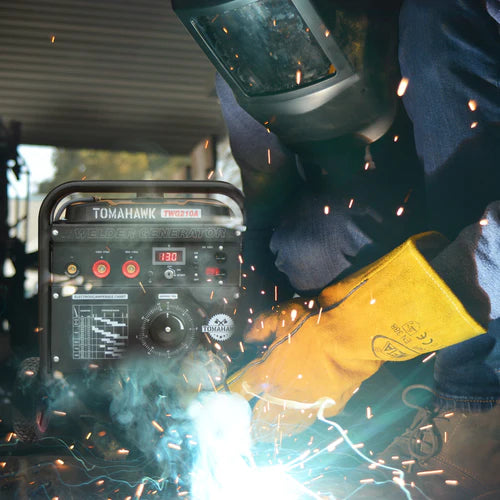Welding with an engine driven welder can be a convenient and effective way to weld in remote locations or areas without a power source. However, it's important to follow best practices to ensure you weld safely and effectively. In this blog post, we'll provide you with some tips on how to weld with a generator.
- Choose the Right Generator
The first step in welding with a generator is choosing the right generator. Make sure you select a generator that provides enough power to operate your welding equipment. You should also consider portability, runtime, and noise levels when selecting a generator.
- Grounding
Grounding is crucial when welding with a generator. Always make sure you have a good ground connection between the workpiece, welding machine, and the generator. This will help prevent electric shock, arc flash, and welding defects.
- Proper Ventilation
Welding produces fumes, smoke, and gases that can be harmful to your health. It's important to have proper ventilation when welding with a generator. If you're welding indoors, make sure the area is well ventilated or use an exhaust fan to remove fumes and smoke. If you're welding outdoors, make sure you're not downwind from the welding fumes.
- Choose the Right Welding Technique
Choosing the right welding technique is important when welding with a generator. Stick welding is the most common welding technique used with generators because it requires less power than other techniques. If you're using a MIG or TIG welder, make sure your generator can provide enough power to operate these machines.
- Avoid Overloading
Overloading your generator can damage your welding equipment and your generator. Make sure you know the maximum output of your generator and don't exceed it. If you're not sure how much power your welding equipment requires, consult the manufacturer's specifications.
- Keep Your Generator Clean
Keeping your generator clean is important for maintaining its performance and longevity. Dirt and debris can clog the generator's air filter, reducing its efficiency. Make sure you clean the air filter regularly and keep the generator's cooling fins clean and free from debris.
- Use Protective Gear
Always wear proper protective gear when welding with a generator. This includes a welding helmet, gloves, long-sleeved shirts, and pants. Protective gear helps protect you from electric shock, arc flash, and welding spatter.
Welding with a generator can be a convenient and effective way to weld in remote locations or areas without a power source. By following these best practices, you can ensure you weld safely and effectively with your generator.










